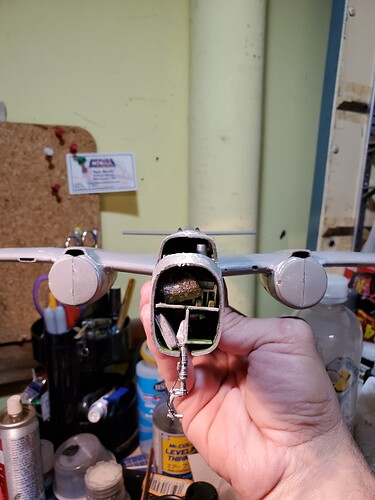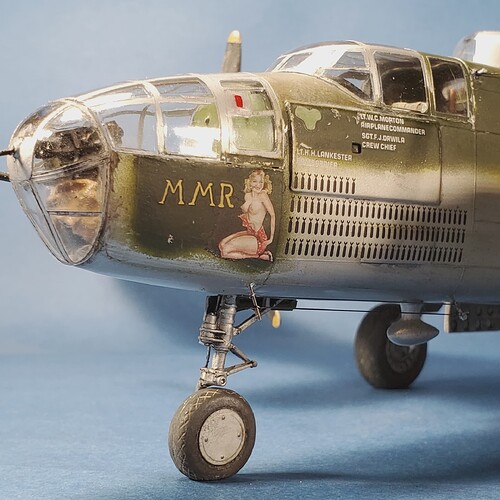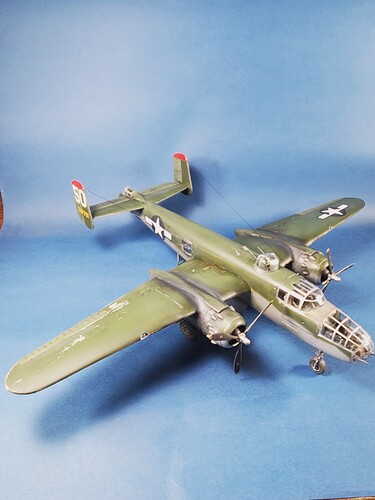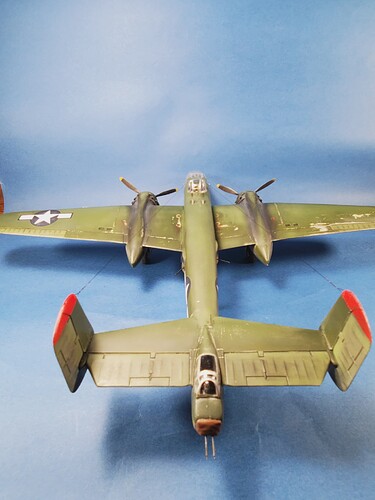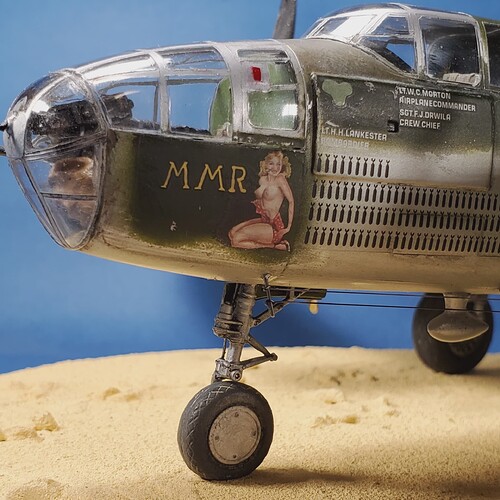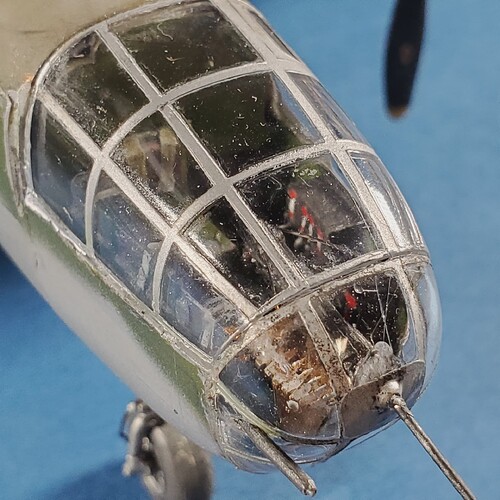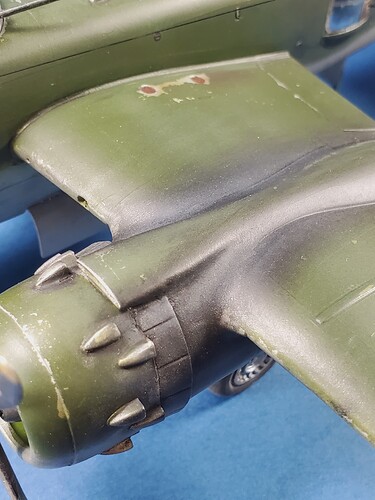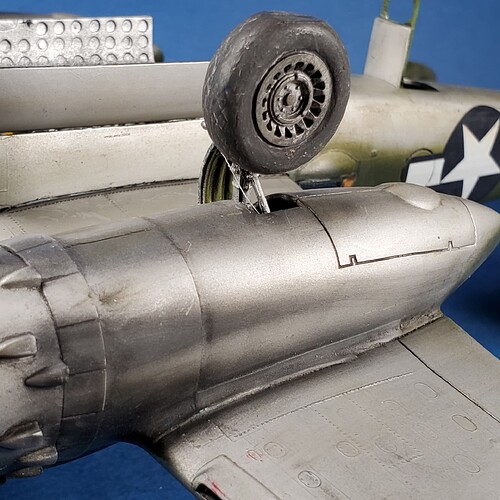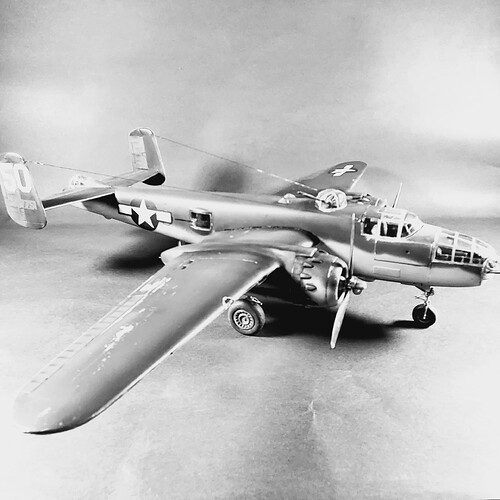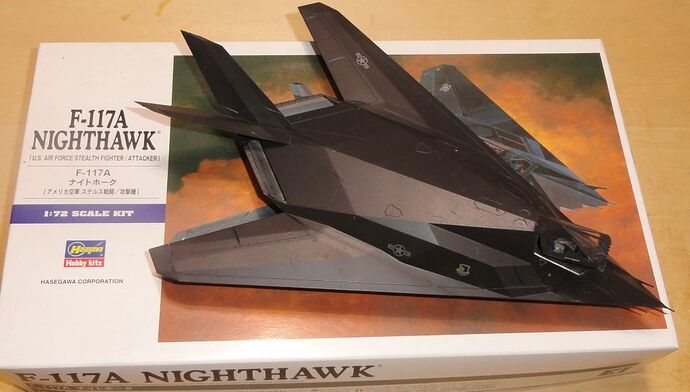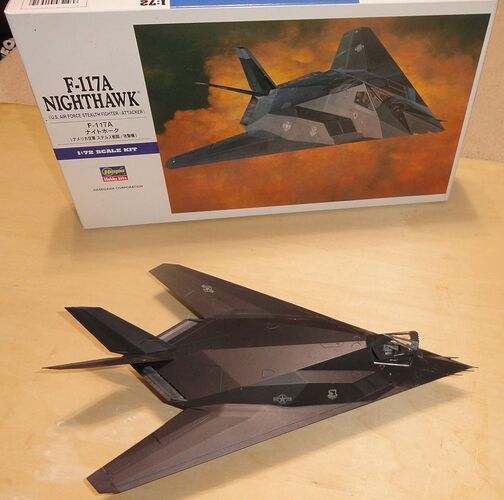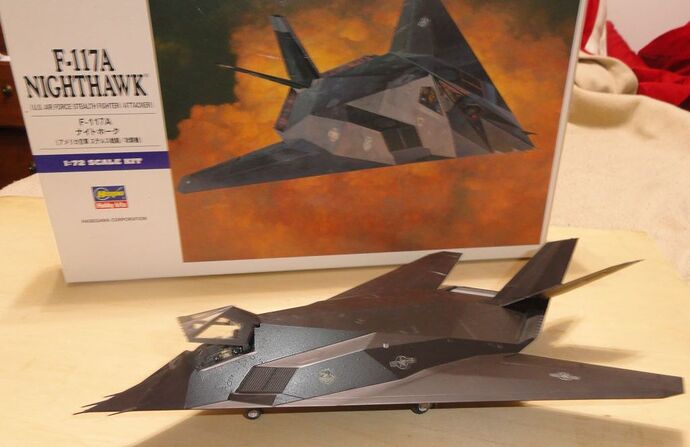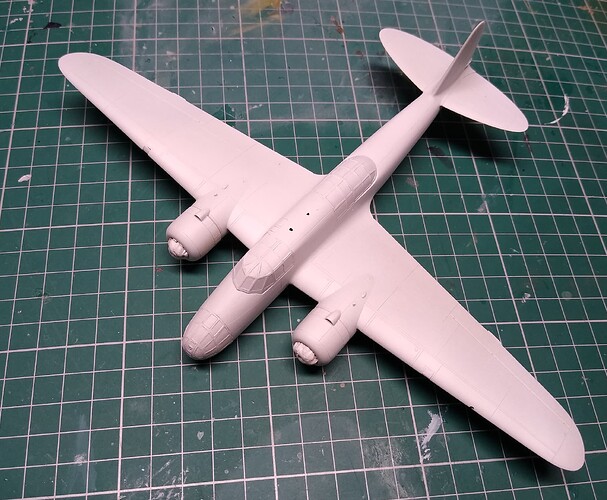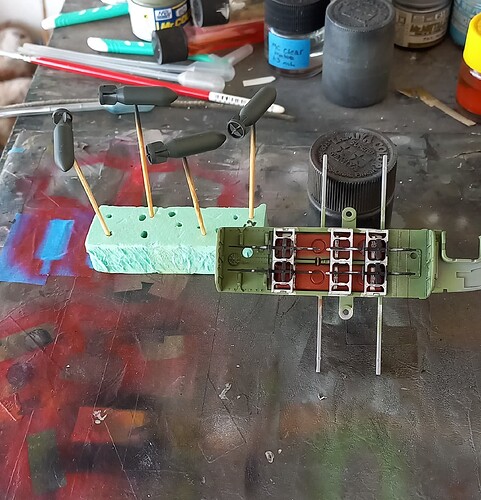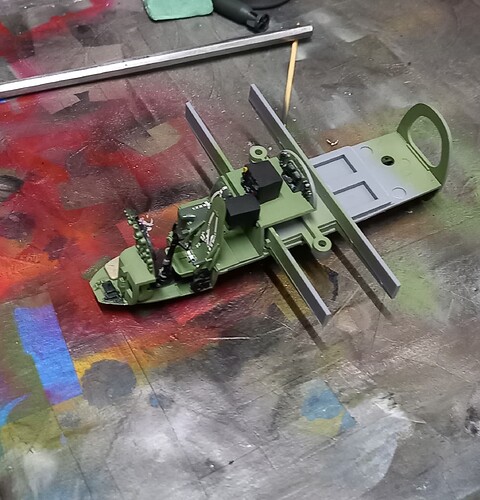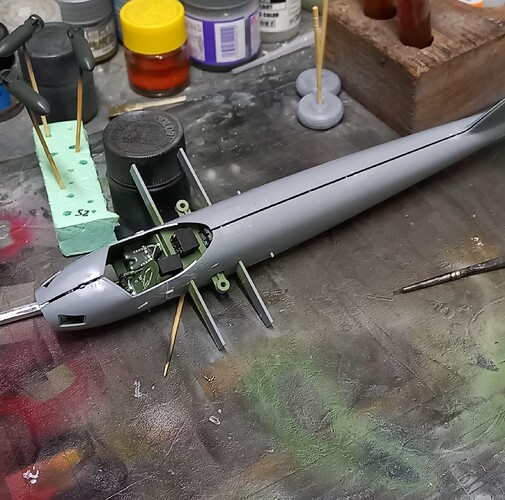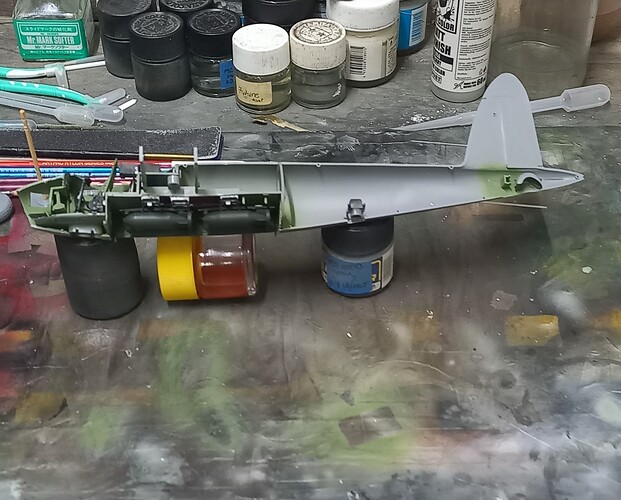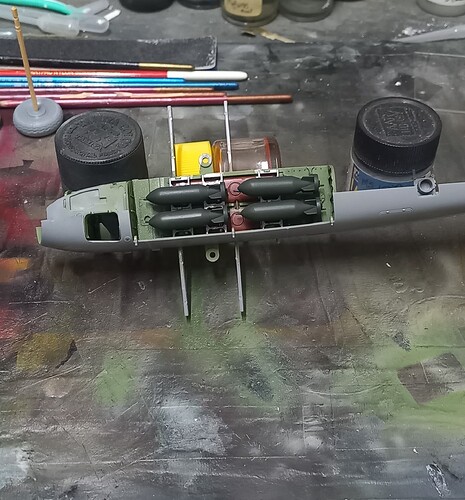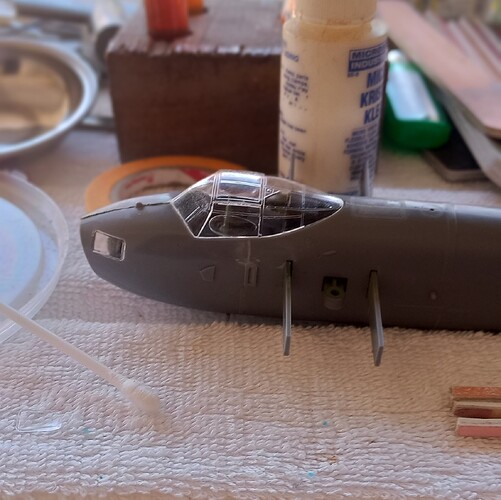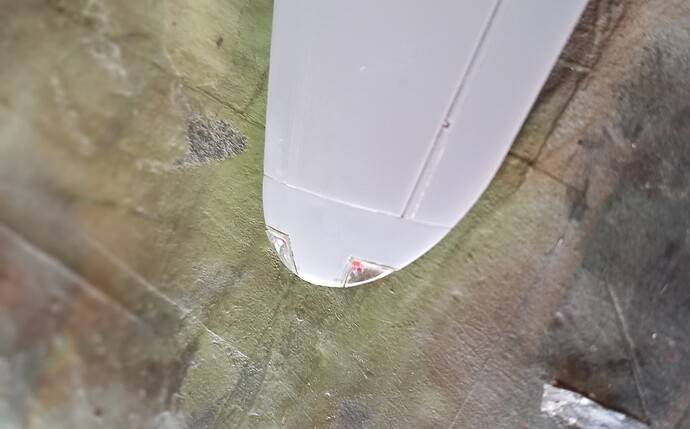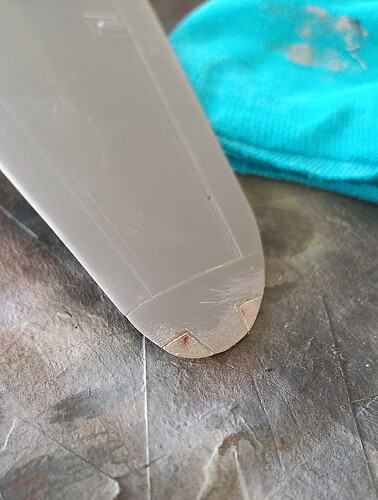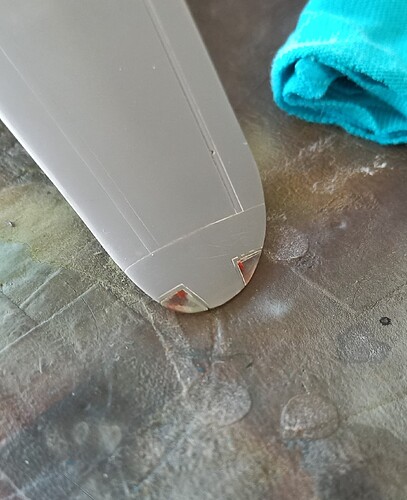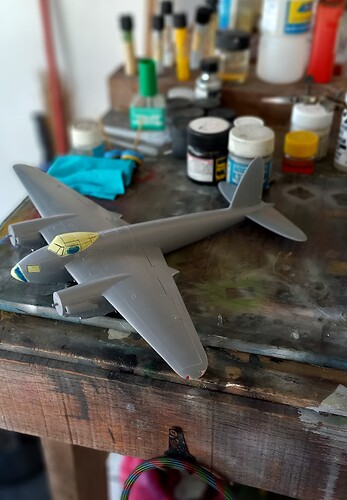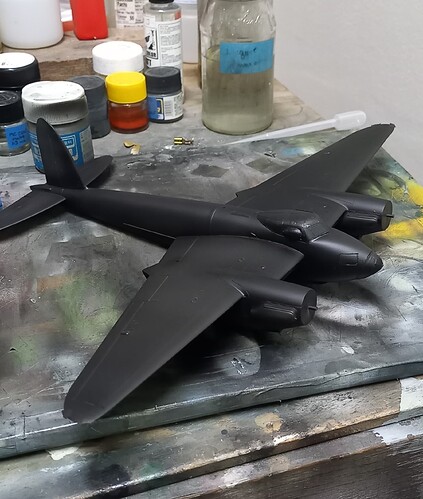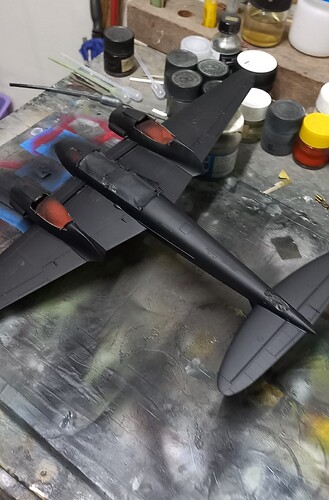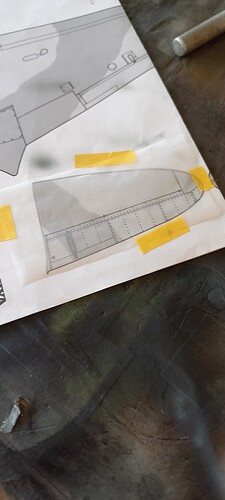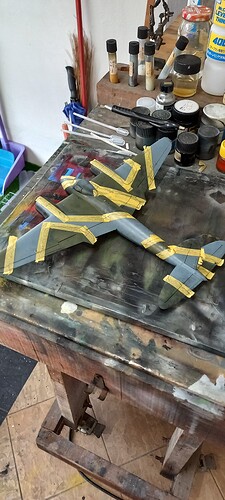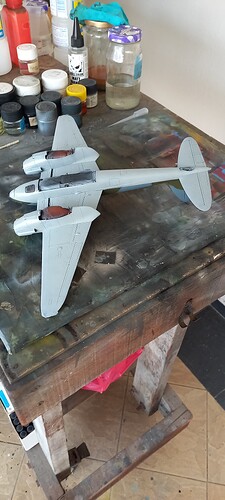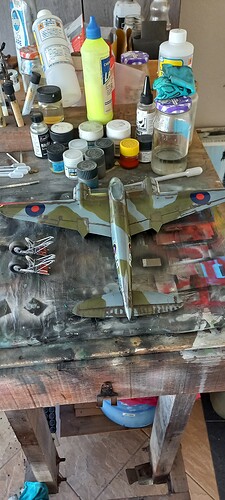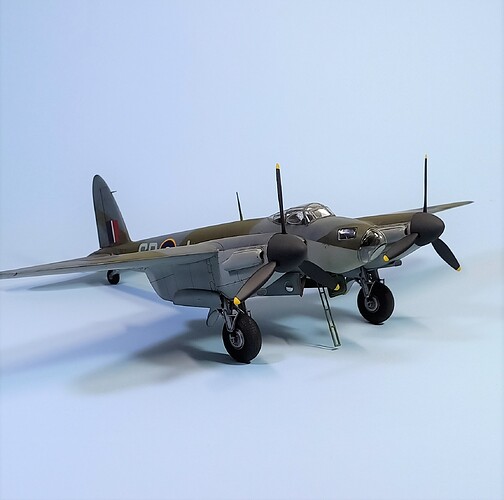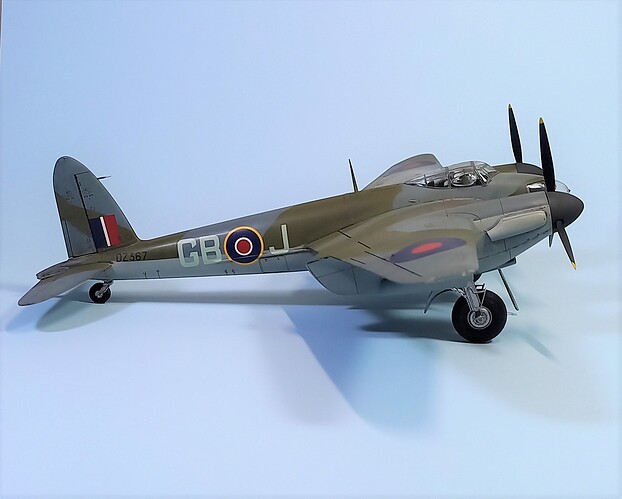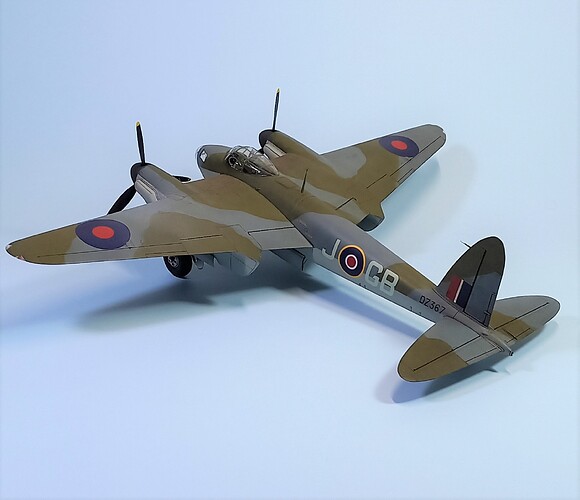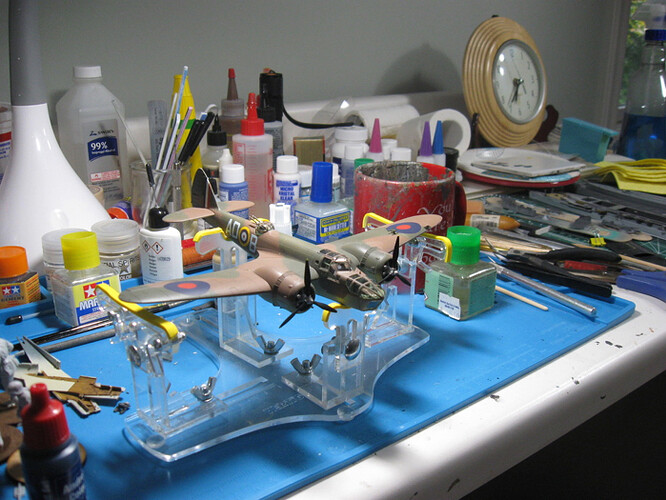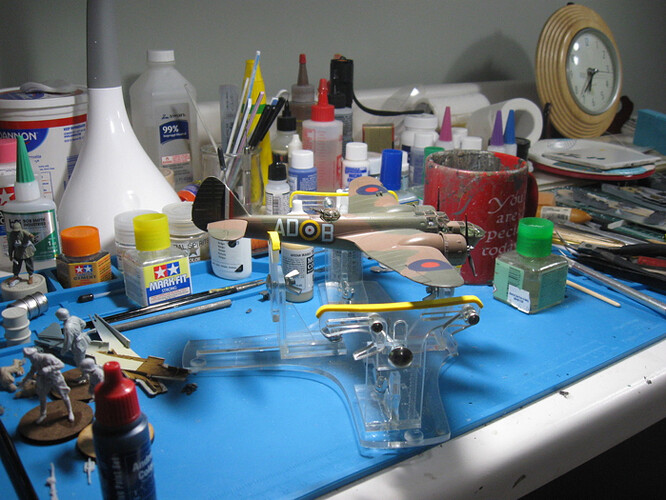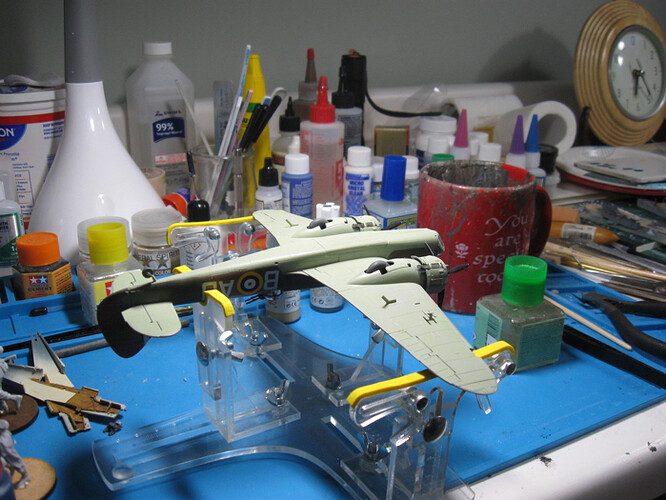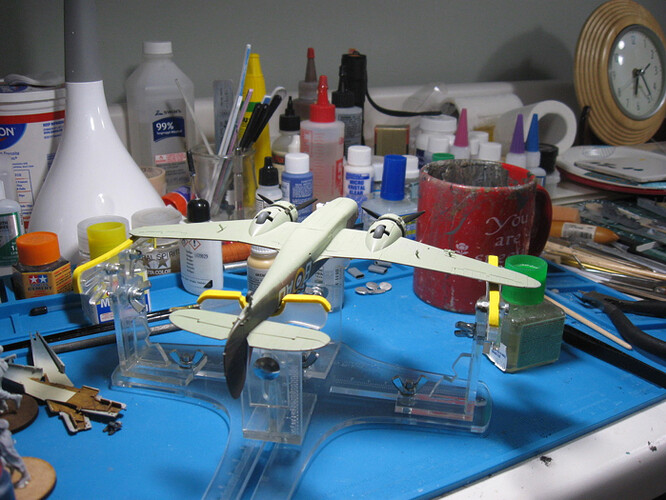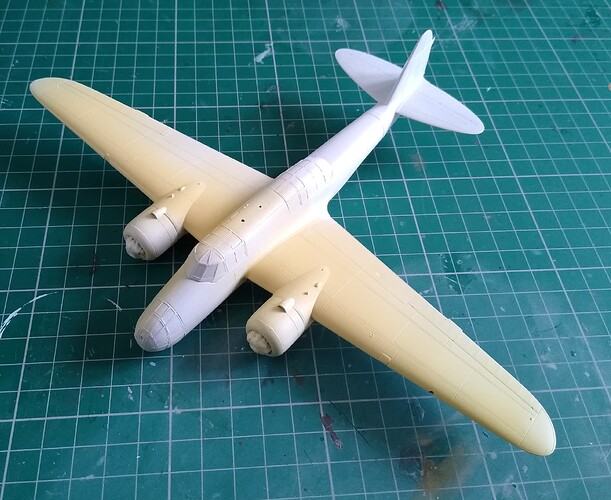Think about all the masochists who cut their own canopy masks for these…
Looking good, Mark. Too bad about the coat of varnish - on the other hand these aircraft seem to be pristine most of the time, so will surely look good when finished.
Stephen, a tedious process, but worth it in the end. Looking good ![]()
![]()
Thanks. It will be in the end. Don’t think I’ll be in a rush to do another heavily framed canopy though!
Finished the Mitchell. I now have my first purpose built bomber I can add to my collection.
I must have missed something during the build because the turret just sits in the opening nit secured to any sort of tie down but all said it was a fun build and i enjoyed it despite the airbrush issues.
Did not get too detailed with scratch/aftermarket with it although the interior is not that good but no one will see it.
some of the things i did add- i replaced some of the guns barrels with hypodermic needles- the front, rear and side guns as they would be most easily to be broken off (btw what do you all use to cut them to length? i had to use a dremel w/a cut off wheel so i didn’t collapse it. git to be an easier way) I scratched some levers in the cockpit and used pieces of scrap IP decals for the instruments. In the nose I added a PE ammo belt and a couple of switch boxes from my spares for the bombardier along with a tarp made of a tan napkin soaked in water/white glue to cover the nordens bomb site as was the practice when the craft was parked. I also added brake lines
i used old tire balance weights in the nose bay and behind the IP but found after painting it wasn’t enough so i had to glue the front crew hatch closed and drop more weights in through the turret opening-
Paint is tamiya bare metal silver, green is a mix of vallejo br drk dreen and c
gunze ija green lightened with white for weathering and chipped using hairspray, control surface vallejo usaf od mixed with their br drk green. exhaust was AB flt black and medium grey.
Ariel wire is 4 lb test spider fishing line. used broken drill bits for the posts, wash is a mix of flory black and detailer drk mud. tires are RRcolors weathered black with a light mud wash.
Sorry for the large library of photos but it is a big model, a lot to cover.
Great campaign everyone!!!
Joe
sweet
I kinda wish I’d done my B-25 for this campaign…
Done, finished, completed. It’s over. Hasegawa 1/72 F-117 Nighthawk, Desert storm veteran.
It’s finished I could have done a bit better. Thanks for the extension, I was soo close, just needed a little more time. I might do another F-117, but not the Hasegawa one again.
Congratulations on finishing! Your B-25 looks really well done with lots of interesting details such as the needle sections for machine guns. The scheme you chose is really fun. The B-25 is one of my favorite aircraft from World War II. Hopefully, some day, I can build one for myself that nice. ![]()
The construction information and paint mixtures you provide are useful. I would not have thought to try some of those cross brand paint combinations.
Congratulations on crossing the finish line! Your model looks very well done to me. Those planes were kept in immaculate condition and your model reflects that.
I have not built an F-117 in many years. Maybe I will pick one up for the next appropriate campaign.
Looks good to me mark. I like the satin finish on it, smooth and even. didn’t know they had such short stubby landing gear.
Joe
@Bomber14 @md72 congratulations on finishing. Really good builds and two aircraft I definitely need to add to my own collection.
Progress has been slower than I wanted on the Lily. Finished up adding the masking and fixing the clear parts in place yesterday. I’ve given the frames a quick brush of Klear to seal them, hopefully that’ll stop any paint bleed.
Nice. The paint is on mine, hope to get the decals down tonight.
Nice work so far. I need to add one to my collection.
Thanks. It’s a nice kit and not one you see very often. Luckily, Hasegawa has the tools and they do reissue it from time to time. From what I can tell, the most recent boxing was the kamikaze conversion with the pole mounted fuse in the nose.
And somebody did a 1/48 recently. Possibly Special Hobby?
Managed a little work today.
First sprayed the canopies with some of the green-brown I used for the interior. After that was dry I sprayed a quick coat of Tamiya white primer to check all the joins.
Everything looks good, so the plan for tomorrow is to airbrush some more white across the rudder and mid fuselage for the band’s and some yellow on the wing leading edge.
Hi Everyone,
Really seeing some spectacular builds coming together! This campaign has really produced some nice completions, with more to come!
So, around the 27th of June, it hit me that I wouldn’t finish the Mosquito, I’d come close and have an opportunity to share a neat little technique I use. Given that I’d been off grid for a few weeks and not checking the site or making updates, I was content to let this build move off to the Hangar Queen XIII campaign. Imagine my surprise to see that there was an extension! So, back to the paint bench I went while neglecting to do any updates. Now that I’m back with the living, here’s my update!
My last update took me through the bomb bay painting. Since then much has been accomplished. I wrapped up the bomb bay, and will admit that it looks great when painted and built as instructed.
I then moved topside and completed the cockpit, again, following the instructions. Little did I know that the pilots seat would be giving me grief in the future. Therefore, I recommend a secure welding it in or holding off on installation until after the fuselage is closed up.
I test fitted the fuselage halves several times prior to committing to glue.
Once satisfied with the fit, I proceeded to glue the interior onto the right half of the fuselage.
Triple checking everything as went along.
I then moved onto what for me was problem area of the build. The canopy. It’s fiddley, with the side windows needing to be attatched. My first attempt involved using Crystal Klear to attach these parts, and all seemed well. This was then attached to the fuselage.
I then moved onto the wing tips to address the navigation lights. I’ve used this technique for some time, though I’m thinking I haven’t shared it. So, I’ll take this opportunity to share a simple technique to get really nice navigation lights onto your bird.
First, prepare the areas for the lights. Painting the wing portion with the appropriate color, in this case I used Tamiya cockpit color (the same for the whole build). Next, put a drop of clear red or green into the premolded hole on the wing side of the light (if there isn’t one drilling this out is fairly easy). Note that for navigation lights remember “Big word, big word. Little word, little word”. Starboard (right) is green and Port (left) is red (shout out to the Sea Scout handbook!). Then using CA glue, glue the light onto the wing such that there is no air trapped under the clear part.
Sand the clear part flush with the wing. Typically I’ll start off with a grit of 400, and then progress to finer grits. Remember that CA glue is strong but has a low tinsel strength, so sand perpendicular to the area glued so as to not cause stress on the glue joint.
Once things are sanded smooth, polish the lights with an ultra smooth polishing stick (I use the ones for fancy fingernails available where nail polish is sold).
This area can be reworked if one doesn’t like the inital results, once satisfied, rescribe any lost detail on the wing. Finally I use some Tamiya tape to cover the area of the light to protect it through the rest of the building process. Ta Da! Hope you all enjoyed that!
It was at this point that I decided to go ahead and put the troublesome canopy together and install the clear parts. Using white glue, I assembled the canopy and using an Eduard mask set for the kit masked the canopy (for canopy’s that have a greenhouse style I usually will purchase these masks as the time they save is well worth their price). I should note that the canopy of this kit was quite troublesome as to not want to stay in place while gluing. I used some tape to hold things down while getting to do what it was designed to do. I then attached it to the fuselage.
I then went on to assemble the airframe. Typical of Tamiya, the wings and stabilizers went on without a hitch, and good fit.
I should note that while doing the minimal seam removal and basic sanding the pilot seat broke free. I found this rather odd though later determined that some paint had not been completely removed, which I believe that this was the reason. I’ve seen modelers online that simply glue parts on over painted areas, and have asked them about this, the answer has been “because it’s lacquer paint and the same as the glue it makes no difference.”. I’m call doo doo from a bull on this reasoning, dried paint will result in a poor glue weld, one should remove it, and double check if you got it all (I neglected the last part).
Needless to say, I had to remove the canopy to re-secure the seat, augmented with glue and CA! Of course during this repair the canopy came apart, which had me repair the canopy, this time using minimal amounts of thin liquid glue and didn’t smear or goof it up! Then it was back to the build.
I completed all the seam work, and things looked pretty good. Now it looks like a mosquito!
The airframe was then primed with Mr. Surfacer 1500 black and any hidden seams looked for and repaired.
Initially I was going to just free hand the camo job, but the kit comes with full size drawings and it’s been a while since I did a true mask job, so I set about cutting the tape for the camo.
I still did a bit of free hand stuff to lay down the black based colors, and then added the masking tape to fill in the voids.
The underside is a breeze, and I got a nice black basing effect to boot!
While all this was underway, the props and the landing gear were assembled, painted, given a wash and set aside for final assembly. I then gave the entire airframe a nice gloss coat of Mr. Color clear, though my 1:4 dilution did cause some of the green upper to fade, requiring a little post retouching, though not a big deal. I used the kit decals and did the plane for the 105 Squadron. The decals went down without any trouble and a light flat clear sealed the deal.
I then attached the fiddly bits, in this case the landing gear, two antennae, the crew hatch and the boarding ladder. With that I called her done, and proceeded to have a nice photo session!
While not like the shake and bake kits Tamiya did 1996, this one does require one to pay a bit more attention to the instructions, and even doing that I managed to mess up the direction of one of the main landing gear wheels. Still this is a well made kit with most everything needed in the box, plus it was lots of fun to build! I recommend it any modeler with a few single engine birds under their belt looking to expand their horizons with a twin engine one.
Thanks to all that participated in this campaign, there’s some truely beautiful builds here. Also, thanks for the extension, for otherwise this would have ended up in Hangar Queen XIII! Speaking of that, if you didn’t finish, you can wrap up and show off your work on the Hangar Queen XIII campaign going on through the end of the year.
Stay safe and have fun!
My Blenheim is done.
Well, I’m calling it done. The eagle eyed among you may notice three things missing. The clear part in the wing. I noticed that when looking at the pics and stuck it in, so it is actually in there. Then there are two masts, one above and one below that I have not attached. That is deliberate as I’m not sure how I’m going to base this. It is wheels up and heavier than my other wheels up planes so my existing basing plan may not work. And until I’m ready to put it on the base I don’t want those things sticking out and getting knocked off.
Here it is, on the painting stand.
Great work guys. The Mossie and Blenheim turned out well.
Masked the white bands on the Lily and sprayed some yellow -beige along the wing leading edge. This will work as a good base for the yellow. Always a difficult colour to airbrush and this technique worked with the yellow tail on my Tigermeet Mirage.
Has anyone ever had a project that feels like the styrene gods are conspiring against you?
I’m definitely getting that vibe here.
Getting in from work earlier, I wanted to crack on with getting at least one coat of yellow on the wings. So set up the airbrush and compressor, switched it on and left it for a few minutes for the tank to fill up and I heard a loud hissing. The source, two splits on the air hose feeding the air tank. So no air was getting to the tank, so no air for the brush. Tried taping it as a temporary fix just to work with today, but air just kept escaping.
Managed to find and order a length of hose the right size on eBay so will try that. If it works great, if not looks like buying a new compressor. Wonderful.
Yes they have been conspiring quite a bit against me lately.
The new hose arrived today, so we’ll find out tomorrow if it works. Can’t really see a problem.
